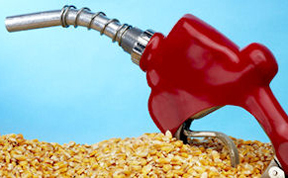Resurgent Gas Usage Seen As Boon To Ethanol
 The lowest oil prices in over six years have fueled a resurgence in U.S. gasoline use in recent months as more Americans take to the road. Demand is expected to climb 1.5 percent this year to nearly 139 billion gallons (526 billion liters) according to the most recent U.S. government forecasts, enough to easily accommodate small increases in ethanol quotas without breaching the so-called "blend wall" that refiners say puts a cap on blending at around ten percent of total gasoline and diesel supply.
The lowest oil prices in over six years have fueled a resurgence in U.S. gasoline use in recent months as more Americans take to the road. Demand is expected to climb 1.5 percent this year to nearly 139 billion gallons (526 billion liters) according to the most recent U.S. government forecasts, enough to easily accommodate small increases in ethanol quotas without breaching the so-called "blend wall" that refiners say puts a cap on blending at around ten percent of total gasoline and diesel supply.
Biofuel backers are up in arms over the Environmental Protection Agency's proposed renewable fuel goals unveiled on May 29, which reaffirmed the agency's stance that ethanol use in fuel has hit a saturation point until more infrastructure and equipment is installed. The proposed volumes fell far short of those laid out in a 2007 law, but still allow for increased blending while also ending years of uncertainty over the future of the nation's complex and contentious renewable fuels policy.
For ethanol producers, the resurgent demand offers a much-needed boost to margins after years of stagnant demand due to a swing to more fuel-efficient cars. Ethanol prices are near multi-year lows, inventories sit close to three-year highs and export demand remains lackluster.
At stake for the government is the future of the Renewable Fuels Standard, a decade-old law and cornerstone of two presidential administrations that was aimed at cutting U.S. dependence on foreign oil and boosting use of cleaner, domestic energy sources.
With Saudi Arabia pumping out near record volumes of crude and few experts forecasting any significant recovery in prices any time soon, the U.S. biofuels industry now stands to gain a bigger share of one of the world's biggest motor fuel markets.
The current pace of demand would put ethanol use at some fourteen billion gallons this year, four to five percent above the amount allotted by the EPA for renewable fuel, largely corn-based ethanol.
 The lowest oil prices in over six years have fueled a resurgence in U.S. gasoline use in recent months as more Americans take to the road. Demand is expected to climb 1.5 percent this year to nearly 139 billion gallons (526 billion liters) according to the most recent U.S. government forecasts, enough to easily accommodate small increases in ethanol quotas without breaching the so-called "blend wall" that refiners say puts a cap on blending at around ten percent of total gasoline and diesel supply.
The lowest oil prices in over six years have fueled a resurgence in U.S. gasoline use in recent months as more Americans take to the road. Demand is expected to climb 1.5 percent this year to nearly 139 billion gallons (526 billion liters) according to the most recent U.S. government forecasts, enough to easily accommodate small increases in ethanol quotas without breaching the so-called "blend wall" that refiners say puts a cap on blending at around ten percent of total gasoline and diesel supply.